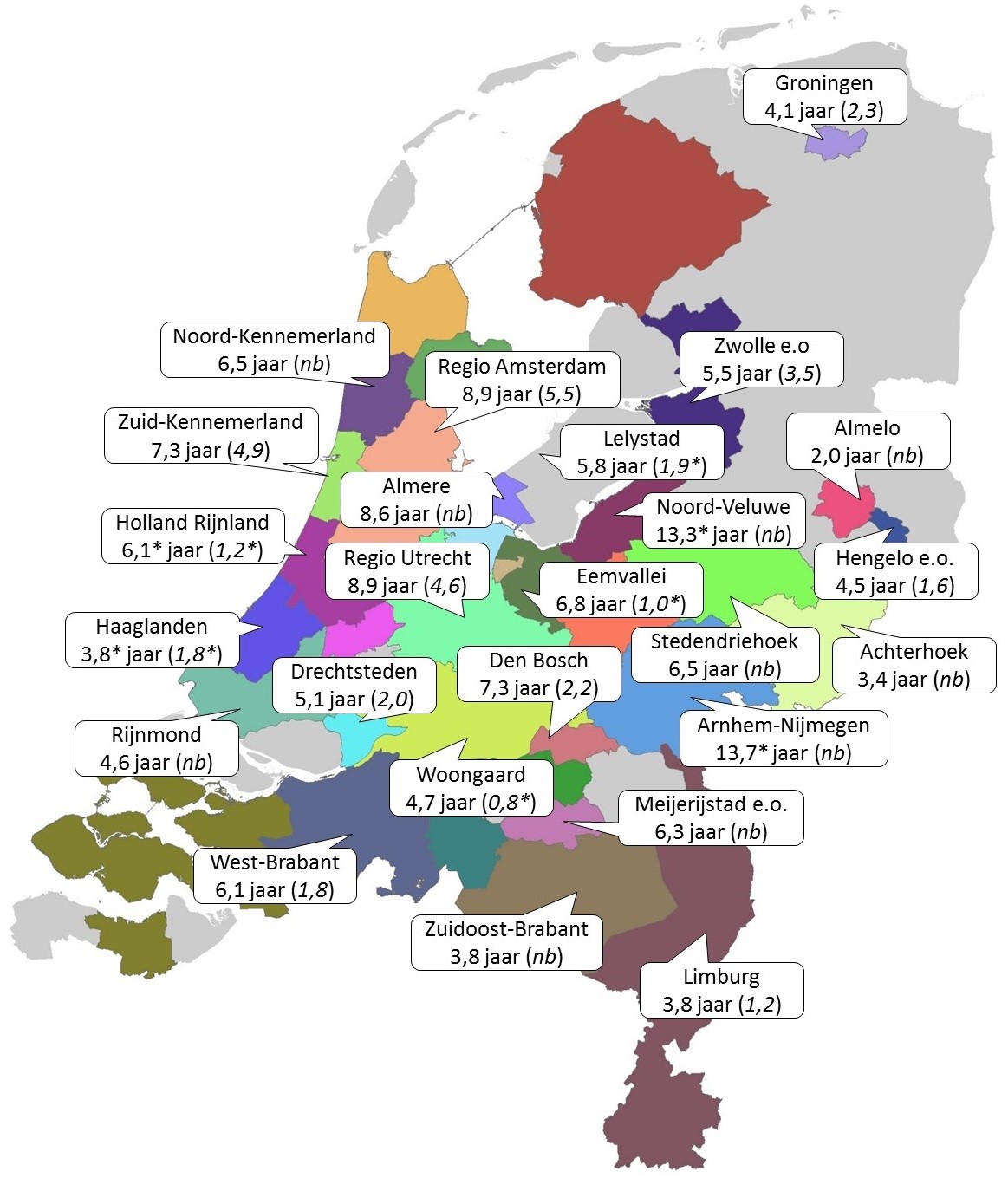Dutch political party VVD states in its current election programme (2021) that the Netherlands has one of the largest social rental sectors in Europe but that the waiting lists for social housing average nine years. The party promises to make social housing more available to people with smaller incomes by stimulating richer people to move to private housing. The VVD is the Netherlands’ largest political party and known for its conservative-liberal policies.
There are two claims to be checked in this statement. The first is ‘The Netherlands has one of the largest social housing sectors in Europe’ and the second is ‘the waiting list for social housing averages nine years’.
Largest social housing sector
Is the VVD’s first claim about social housing true? In 2018, the Netherlands totalled 7.7 million houses. The amount of social housing units was 2.2 million, according to a study by the Dutch government in 2018. Social housing accounts for 28,7% of the total housing market. According to researcher Alice Pittini and the writers of the academic book Social Housing in Europe, the Netherlands indeed has the largest share of social housing, when seen as a percentage of the country’s total housing market.
In Social Housing in Europe (2007), a book published by London School of Economics and Political Science, an interesting distinction about social housing sectors became clear. The Netherlands has the highest percentage of social housing in Europe (now 28,7%). However, France has 4.2 million social houses, compared to the 2.4 million that the Netherlands has. But the 4.2 million French social houses make up only 17% of the total French housing market. Therefore, the Netherlands does have the largest social housing sector in Europe when analysed in the perspective of the national housing market as a whole.
Utrecht University professor dr. Joep Steegmans says “The Netherlands indeed has a large social housing sector, though it is hard to compare it to other countries because the definitions of social housing vary.” Steegmans is specialised in the housing market. He points out that Dutch statistics often confuse the amount of houses owned by housing corporations and social housing units.
These two aspects are not the same: housing corporations also own houses which are not social houses, meaning the amount of social houses is lower than the amount of houses owned by housing corporations. The Dutch percentage of 28% social housing as a total of the market share is presumably lower.
As Steegmans mentions, the definition of social housing differs amongst the EU countries, write also Whitehead & Scanlon, and Sipková et al. “Different definitions are related to a different level of public intervention in this sector. The common feature is the fact that the purpose of social housing is the general interest, the increase of affordable housing supply and that concrete social housing objectives are based on the socio-economic status and risk factors present” (Sipková et al, 2020, p. 60).
Waiting list of nine years?
Moving on to the second part of the statement, that the average time on a waiting list for a social house is nine years, it appears the VVD isn’t quite right. Country-wide statistics are scarce, though the RIGO housing research institute has looked at waiting time per region. A waiting time of nine years is only true in the provinces of Utrecht and Amsterdam. Furthermore, states RIGO, the term waiting time is often confused with registration time. A person has to actively be responding to house offers if it is to count as waiting time.
Steegmans also mentions this. “The VVD has probably used a research project carried out by RTL News (a large commercial television channel), which used the subscription time. It is questionable if this is the best indicator of a waiting list,” says the professor.
In other Dutch regions, nine years is not the average waiting time. As can be seen on the figure below, the maximum is 8,9 years, which is seen in Utrecht and Amsterdam.

Source: Kromhout, S., & Wittkämper, L. (2019, March). Stand van de woonruimteverdeling: Wachttijden en verdeling in de praktijk. RIGO Research en Advies.
In conclusion
The statement made by party VVD, “The Netherlands has one of the largest social housing sectors in Europe but the waiting list for social housing averages nine years”, can be split in two parts. The first, ‘The Netherlands has one of the largest social housing sectors in Europe’, is true but the second ‘the waiting list for social housing averages nine years is false.
This post was originally posted on www.eufactcheck.eu | A project of the European Journalism Teachers Association, the Utrecht School of Journalism is a proud member.
Leave your comments, thoughts and suggestions in the box below. Take note: your response is moderated.

